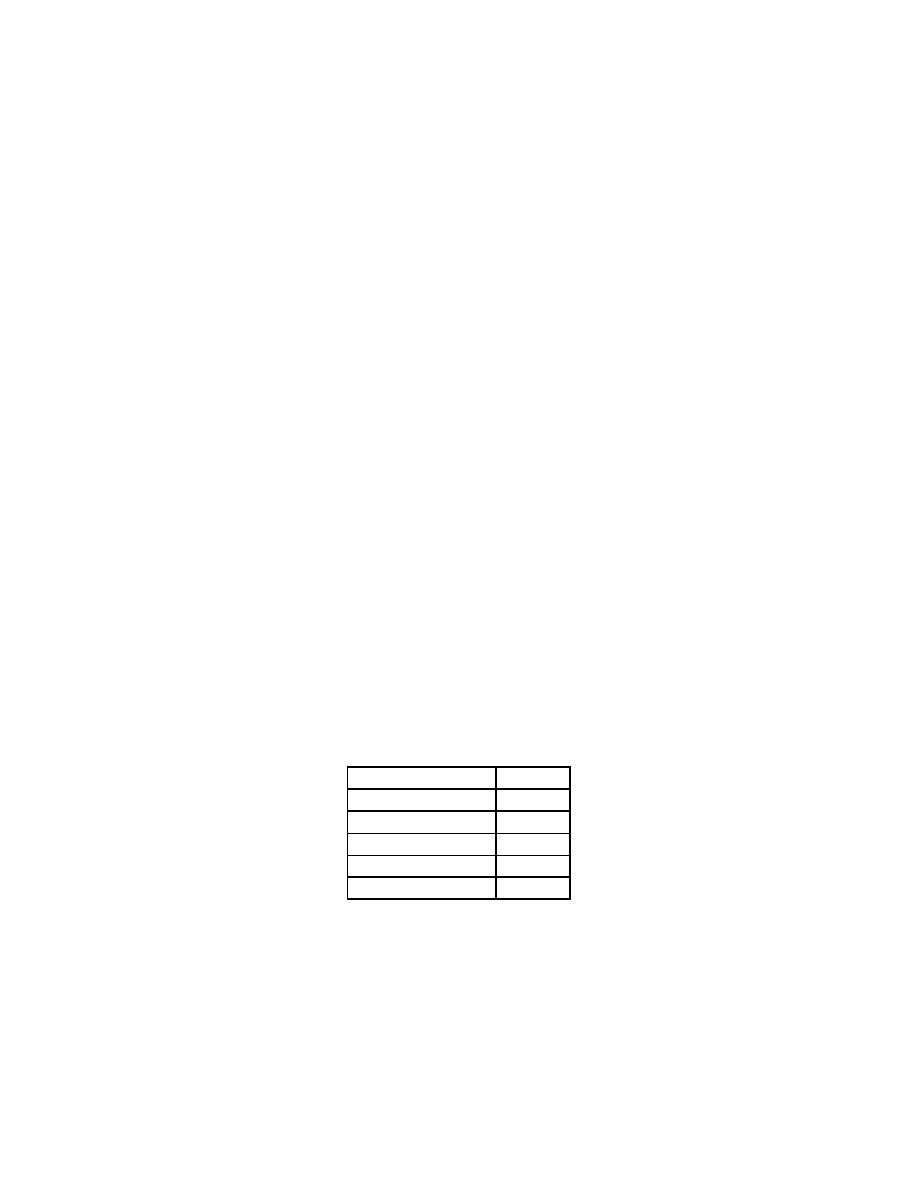
CEMP-ET
TI 809-53
01 May 1999
(3) Foam Slope. For Sprayed-in-Place Polyurethane Foam (SPF) systems positive
drainage is also needed. However, small puddles are inevitable as SPF is never completely
smooth. Small puddles should dry out within 24-48 hours after inclement weather. Additional
elastomeric coating is recommended where ponding is anticipated.
(4) Reroofing. In reroofing and re-covering applications, correcting the slope to 2% (1/4
in./ft.) is sometimes unfeasible because of low windows, flashings, etc. In these cases, tapered
insulation at 1.5% (3/16 in./ft.) slope may be an acceptable compromise.
(5) Steep Roof Conversion. Conversion of a poorly draining roof to a steep roofing
system may be accomplished on a relatively narrow roof system building by installing new sloped
joists.
e. Vapor, Humidity, Moisture and Condensation. Moisture can be carried through materials
by diffusion or by the movement of air. Air barriers are needed to reduce air movement. They can
be located anywhere within the building envelope. Vapor retarders, when needed, must be placed
within the warm portion of the thermal insulation.
(1) Self-Drying Systems. In cold weather, warm moist indoor air driven from within the
building towards the colder exterior may accumulate during the winter then dry back out again
during the summer months. Guidelines for the use of vapor retarders in roofs are presented in
CRREL Misc. Paper 2489, Vapor Retarders for Membrane Roofing Systems. Figure 2-14a
indicates suggested maximum allowable relative humidities where summer dry-out should be
o
o
adequate. Figure 2-14b is used to adjust figure 2-14a for temperatures other than 15.5 C (60 F).
(2) Reverse Vapor Drive. For hot humid climates a reverse vapor drive may occur
especially in cooler and freezer buildings. In this case the membrane and wall retarder must be
sealed and continuous. Roof vents and breathing edge details must be avoided. For freezer
buildings, consider separating the roof system from the freezer.
(3) High Humidity Occupancies. For buildings with high interior relative humidity
including bakeries, laundries, pools, kitchens, dining halls with serving lines and the like, vapor
retarders are considered essential.
Table 2-15. Typical Indoor Relative Humidity in Winter.
Offices
30-50%
Hospitals
30-55%
Computer Rooms
40-50%
Department Stores
40-50%
Swimming Pools
50-60%
Textile Mills
50-85%
(4) Bituminous Vapor Retarders. Bituminous retarders are installed over solid fire barrier
substrates such as concrete, gypsum board, or a fire resistant insulation. Bituminous retarders
have near zero perm ratings. For most membrane roofing systems vapor retarder permeance
should be below 0.5 perms (28.6 ng/ssq mPa). Perm ratings for various vapor retarder materials
can be found in the ASHRAE Handbook of Fundamentals as well as in industry literature.
(5) Non-bituminous Vapor Retarders. Non-bituminous single-ply systems may use
plastic films as vapor retarders. These can be successful if the seams and penetrations are
2-21


 Previous Page
Previous Page
